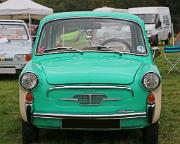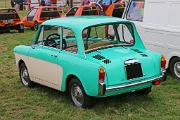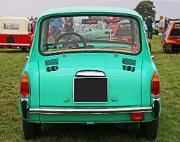
Autobianchi Bianchina 1962 Berlina. The Bianchina gave Fiat the chance to sell the Fiat 500 at higher prices and the recipe was very successful.
Autobianchi Bianchina 1962 Berlina. The Berlina, or Quattroposti was launched in 1961 offering 4 seats and offered a higher priced product than the standard Fiat 500.

